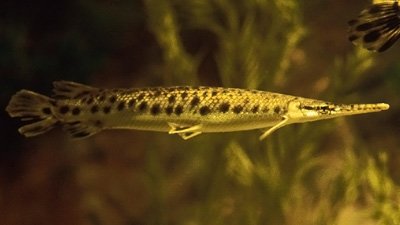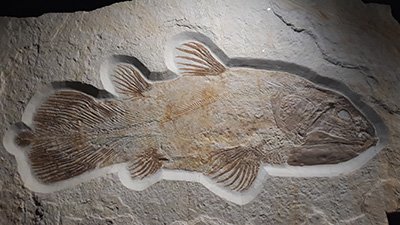A Tree of Today?
A study published in this week’s issue of the science journal Nature describes two recent discoveries of the world’s oldest (allegedly) tree fossils.
News Source
- National Geographic News: “Newfound Fossils Reveal Secrets of World’s Oldest Forest”
A study published in this week’s issue of the science journal Nature describes two recent discoveries of the world’s oldest (allegedly) tree fossils. The study’s lead author, paleobotanist William Stein of New York’s Binghamton University, describes the fossilized tree as looking like “a palm tree, or perhaps a tree fern.” According to Stein, the trees “belong to a previously known plant group called cladoxylopsids.”
Now come the interesting parts. First, we read Stein’s appraisal of the trees’ form:
It’s a kind of morphology that's instantly recognizable among some modern groups [of trees].
In this sense, the fossil find qualifies as yet another “living fossil.” A living fossil is one that is considered “ancient” (having lived and gone extinct millions of years ago) but-to the puzzlement of evolutionists-has many of the fully developed features found in modern, extant creatures. Often the resemblance is so striking that only a bona fide paleontologist would know that one of these living fossils isn’t alive today.
Here’s the two-part “problem” (for evolutionists) with living fossils: first, living fossils show that advanced features had far less time to evolve than what evolutionists suspected; evolving from primordial goo to complex life in a billion years would be “hard enough” without such living fossils reducing the time-div. Second, living fossils present the problem of apparently having had no modification despite supposed millions of years of natural selection.
The article’s other telling facet is Stein’s comment about how “[t]he traits of the Gilboa trees are found in many tree types throughout history.” Stein explains:
[The traits] cannot all be traced back to the same common ancestor, so it’s clearly a recurrent evolved form,” he said.
“The reason for that is probably ecology, probably something to do with a way of being a large tree or a large plant. It’s one way to do it, and it is now clearly the oldest way.
In other words, there are many trees similar in form and feature to these newfound fossil trees-but their differences are substantial enough that Stein (and other evolutionists) can’t connect them in an evolutionary lineage. The only possible conclusion for an evolutionist: all the various tree forms with these similar features evolved the similar features on their own, separate from the others. The problem with such convergent evolution (or “recurrent,” as Stein puts it): if it’s chancy enough for a feature to evolve once, then how much more unlikely would it be for that same feature to evolve again and again!
For More Information: Get Answers
Remember, if you see a news story that might merit some attention, let us know about it! (Note: if the story originates from the Associated Press, FOX News, MSNBC, the New York Times, or another major national media outlet, we will most likely have already heard about it.) And thanks to all of our readers who have submitted great news tips to us. If you didn’t catch all the latest News to Know, why not take a look to see what you’ve missed?
(Please note that links will take you directly to the source. Answers in Genesis is not responsible for content on the websites to which we refer. For more information, please see our Privacy Policy.)
Recommended Resources

Answers in Genesis is an apologetics ministry, dedicated to helping Christians defend their faith and proclaim the good news of Jesus Christ.
- Customer Service 800.778.3390
- Available Monday–Friday | 9 AM–5 PM ET
- © 2026 Answers in Genesis






